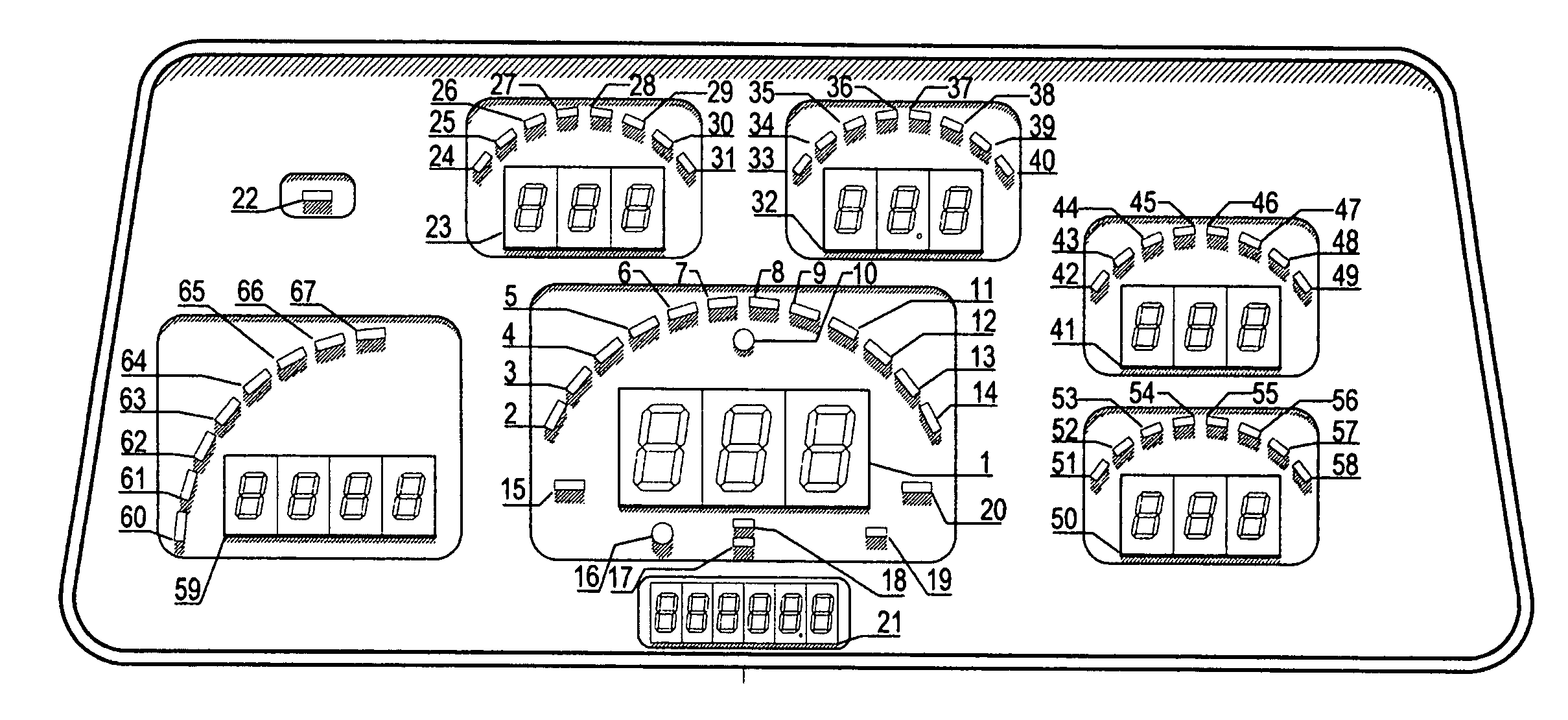Informational display for rapid operator perception
a technology of operator perception and information display, which is applied in the direction of identification means, instruments, transportation and packaging, etc., can solve the problems of affecting the safety of vehicle operation, and affecting the operation of vehicle dash clusters, etc., so as to improve the potential for safe and lawful vehicle operation, improve the effect of cognitive processing of information, and improve the effect of vehicle operation
- Summary
- Abstract
- Description
- Claims
- Application Information
AI Technical Summary
Benefits of technology
Problems solved by technology
Method used
Image
Examples
Embodiment Construction
[0032]The following detailed description is the best currently contemplated modes for carrying out the invention. The description is not to be taken in a limiting sense, but is made merely for the purpose of illustrating the general principles of the invention.
[0033]FIG. 1 is a rendering of a dash cluster, in one embodiment, which exemplifies the geographical orientation, the coloring, and three-dimensional effect of the gauges and indicators contained within. The dashed line through the center indicates where the sectional view, at right is located from. This view illustrates the three-dimensional aspect of the present invention.
[0034]In one embodiment, the rectangular boxes of the present invention are representative of Light Emitting Diodes (LEDs) that illuminate when activated by a microcontroller located behind the dash cluster. As will be apparent to one skilled in the art, other types of materials may replace the LEDs to perform the same function. Moreover, the LEDs are repre...
PUM
 Login to View More
Login to View More Abstract
Description
Claims
Application Information
 Login to View More
Login to View More - R&D
- Intellectual Property
- Life Sciences
- Materials
- Tech Scout
- Unparalleled Data Quality
- Higher Quality Content
- 60% Fewer Hallucinations
Browse by: Latest US Patents, China's latest patents, Technical Efficacy Thesaurus, Application Domain, Technology Topic, Popular Technical Reports.
© 2025 PatSnap. All rights reserved.Legal|Privacy policy|Modern Slavery Act Transparency Statement|Sitemap|About US| Contact US: help@patsnap.com



